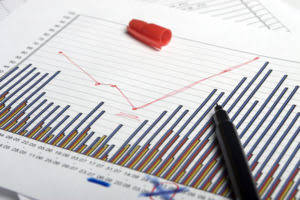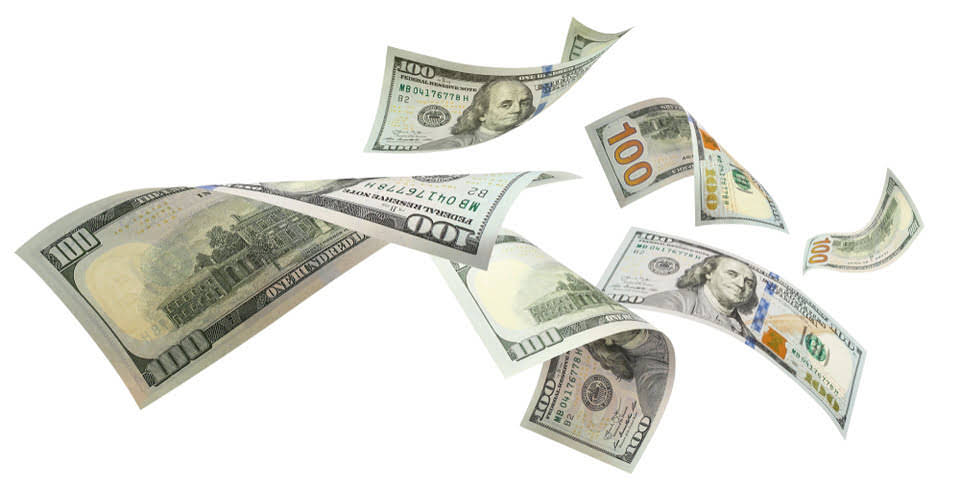Content
A business will sometimes convert accounts receivable into notes receivable to give the customer-debtor more time to pay. So to ensure that the business can collect on most if not all of its accounts receivables, it needs to have proper credit and collection policies in place. Accounts receivable that have a term of more than a year are not current assets. That’s why you can find the raw materials inventory, WIP inventory, and finished goods inventory on a manufacturer’s balance sheet. It’s important for you, as the business owner, to know how many current assets your business has.

Noncurrent assets are a company’s long-term investments for which the full value will not be realized within a year and are typically highly illiquid. It is important for a company to maintain a certain level of inventory to run its business, but neither high nor low levels of inventory are desirable.
Examples Of Cash
If these claims by the Company are to be matured or paid within one year, they are entered as non-trade receivables under current assets. Cash EquivalentsCash equivalents are highly liquid investments with a maturity period of three months or less that are available with no restrictions to be used for immediate need or use. These are short-term investments that are easy to sell in the public market.. The portion of ExxonMobil’s balance sheet pictured below from its 10-K 2021 annual filing displays where you will find current and noncurrent assets.

Still, Liz wants to keep true to the requirements of her loan and loan officer. She resolves to assemble her salespeople in a meeting and align them around the goal of increasing accounts receivable levels by $3,500. “current assets are one of the first steps in assessing the financial soundness of a company,” says Stucky. “But analysts go much further and assess those current assets against current liabilities … financial obligations that a business expects to incur over the near term.”
Definition Of Current Asset
Using an inventory management solution that integrates with QuickBooks can help a business to account for and calculate all of the above current assets with more precision and accuracy. The term current asset is formed with two words – current and asset. These are those assets or valuables of a business that keep circulating. The typical time frame for circulation is the financial period which is usually one year. Even if you plan to sell a piece of equipment within a year of purchasing, it’s still considered a long-term, non-current asset.
IPSAS 44 is based on International Financial Reporting Standard (IFRS®) 5, Non-current Assets Held for Sale and Discontinued Operations, developed by the International Accounting Standards Board (IASB®). The International Public Sector Accounting Standards Board® (IPSASB®) has issued International Public Sector Accounting Standard® (IPSAS®) 44, Non-current Assets Held for Sale and Discontinued Operations. These were situations where a company could be purchased at prices meaningfully below a conservative estimate of liquidation value . To solve this problem, a portion of the expense is spread out over a number of years instead. Expenses accounted for in this way are known as “capital expenditures”.
Current Assets List
It is determined by measuring the total depreciation of all of these assets against their gross value. A high ratio signals that assets will soon need replacing, a necessary expense that will impact upon retained revenue. Bearing in mind the significant cost of these assets, this method of asset analysis can prove invaluable to businesses. Cash is the primary current asset and it’s listed first on the balance sheet because it’s the most liquid. It includes a business’ checking account that’s used to pay expenses and receive payments from customers. Next, we’ll take a deeper look into different types of assets and learn why they’re considered current assets. Liquid assets are assets that you can quickly turn into cash, like stocks.
- The cash holdings of a company include petty cash, currency and checking accounts.
- Examples of noncurrent assets include long-term investments, land, intellectual property and other intangibles, and property, plant, and equipment (PP&E).
- Likewise, the balance sheet will also draw a distinction between current liabilities, which are short-term debts that must be paid within a year, and long-term liabilities.
- Cash EquivalentsCash equivalents are highly liquid investments with a maturity period of three months or less that are available with no restrictions to be used for immediate need or use.
As such, non-current assets are seen as long-term investments, which are intended to create long-term benefits. The main problem with relying upon current assets as a measure of liquidity is that some of the accounts within this classification are not so liquid.
Current assets are all assets that a company expects to convert to cash within one year. Types Of InventoryDirect material inventory, work in progress inventory, and finished goods inventory are the three types of inventories. The raw material is direct material inventory, work in progress inventory is partially completed inventory, and finished goods inventory is stock that has completed all stages of production. Cash flow is the net amount of cash and cash equivalents being transferred into and out of a business.
Current Assets Meaning
Cash And Short-term InvestmentsCash and Cash Equivalents are assets that are short-term and highly liquid investments that can be readily converted into cash and have a low risk of price fluctuation. Cash and paper money, US Treasury bills, undeposited receipts, and Money Market funds are its examples.
Cash and cash equivalents are the most liquid of assets, meaning that they can be converted into hard currency most easily. This counts products that are sold for cash as well as resources that are consumed, used, or exhausted through regular business operations that are expected to provide a cash value return within a single year.
- It means that the company has rendered services or delivered the product to the customer.
- In general, a business would want to have enough current assets to generate a current ratio of 1.5 to 3.
- Whether an asset gets classified as a current or noncurrent asset depends on how long the company expects it will take to turn the asset into cash.
- Not to be confused with the terms above, a fixed asset is an asset that is not consumed or sold such as land, buildings, equipment, machinery, vehicles, and leasehold improvements.
- And to pay for these short-term obligations, your business needs “current assets”.
- The key features of the current asset are their short-lived existence, fast conversion into other assets, recurring and quick decisions, and, lastly, interlinked.
Shareholder equity is a company’s owner’s claim after subtracting total liabilities from total assets. A fixed asset is a long-term tangible asset that a firm owns and uses to produce income and is not expected to be used or sold within a year. Decreases in accounts receivable imply that cash has been collected.
The current ratio uses all of the company’s immediate assets in the calculation. These items are typically presented in the balance sheet in their order of liquidity, which means that the most liquid items are shown first. The preceding example shows current assets in their order of liquidity. After current assets, the balance sheet lists long-term assets, which include fixed tangible and intangible assets. Fixed assets, also known as noncurrent assets, are intended for longer-term use and are not often easily liquidated.
Key Provisions Of Ifrs 5 Relating To Assets Held For Sale
The company’s current asset level is up from $2.9 billion at the start of the year. You can explore these principles in much greater detail on ourtwo-day financial statement analysis course, which takes place virtually. When a business is doubtful whether a customer will settle its debts it needs to make an allowance for this in the balance sheet. This is done by making a “provision for bad and doubtful debts” which effectively reduces the value of trade debtors to the total amount that the business reasonably expects to receive in the future. Current assets are assets that a company expects to use or turn into cash within a year.

However, a company that buys the machinery and will use it for years to come would consider it a fixed asset. A company’s current assets and related financial ratios offer insight into its financial health. Cash, short-term investments, accounts receivable, inventory, and supplies are common examples. Together, current and non-current assets form the assets side of the balance sheet, meaning they represent the total value of all the resources that a company owns. Current assets reflect the ability of a company to pay its short term outstanding liabilities and fund day-to-day operations. They are not technically liquid because they don’t earn a company money; however, they are listed among a company’s current assets because they free up capital to be used later.
Is Equipment On The Balance Sheet?
In most industries, they comprise the majority of an organisation’s assets. Theydepreciate, meaning that their value falls over time as their benefits are used up. This depends on many credit terms and the industry standards of such credit terms. Understanding what types of assets you have will give you a clearer idea of which ones can be converted to cash to fund your business endeavors. If you have too much inventory, your items could become obsolete, they could expire or spoil (e.g., food items), and you’ll spend too much money on manufacturing and storing the merchandise.
- We also reference original research from other reputable publishers where appropriate.
- Current assets are the assets a business owns which are either cash, cash equivalents, or are expected to be turned into cash during the next twelve months.
- Long-term investments, such as bonds and notes, are also considered noncurrent assets because a company usually holds these assets on its balance sheet for more than a year.
- It is important to note that the current ratio can overstate liquidity.
- Current assets are often used to pay for day-to-day-expenses and current liabilities (short-term liabilities that must be paid within one year).
Since the current assets are very short-lived and are frequently converted into other current assets, the decisions relating to such assets are also recurring in nature and require quick decision-making. If you need a quick way to remember what’s considered non-current, think property, plant, equipment, and intangible assets.
Net Working Capital Ratio – Portrays the additional funding the company has available for financing operations in relation to the size of the company. Prepaid Expenses- The value of goods or services that the company has paid for in advance but not yet received.
Current Assets And Liquidity Ratios
Marketable securities are also cash equivalents if they are due within 90 days or less. Notes https://www.bookstime.com/ receivable refers to receivables that are usually made outside of normal business operations.
Short
Accounts receivable are usually incurred when buyers pay a company for its products or services with credit. These types of securities can be bought and sold in public stock and bonds markets. The investment in marketable securities for Apple Inc. decreased from $ 53,892 Mn to $ 40,388 Mn from 2017 to 2018, respectively. The cash and cash equivalents in the case of Apple Inc. increased from $ 20,289 Mn to $ 25,913 Mn from 2017 to 2018, respectively. In that case, the company will record a $10 million prepaid expense to account for the insurance expense it will show in the month that it already paid for. Certificate Of DepositsA certificate of deposit is an investment instrument mostly issued by banks, requiring investors to lock in funds for a fixed term to earn high returns. CDs essentially require investors to set aside their savings and leave them untouched for a fixed period.
What Are Some Examples Of Current Assets?
Rather, the current assets balance sheet account is compiled from several smaller accounts. Current assets are combined with noncurrent assets to make up the company’s total assets on its balance sheet.
Leave a Reply